Want to learn 3D? Follow Adam Benton's advice
Adam Benton tells you everything you need to know to make credible 3D works
Computer Arts: How did you get into 3D design?
Adam Benton: I'd always worked traditionally with paint and airbrushes, and I was also involved in music production through the 90s, and so, at some point, bought a PowerMac. I was introduced to Photoshop, and a 3D app named Infini-D, and I started to realise that computers might now be a viable tool for artistic, visual output as well as audio, and I began to experiment with scanning in photos, manipulating them in Photoshop, adding 3D rendered elements, and making simple digital art compositions. It wasn’t until 1998 while employed as a senior designer amd illustrator at a publishing company that, alongside the Photoshop paintings, page layout and rudimentary 3D, I was introduced to Bryce 4.
This app changed my world completely: I finally saw the potential to create the images I'd spent days on with airbrush and brush, in the digital realm. I tried to incorporate the 3D and 2D digital tools into my daily workflow as much as possible, and even when I got home, I started experimenting with my own, usually sci-fi, images, and learned to wrangle Bryce better. From there my learning of the tools kept moving forward, until in 2001 or 2002 I started working with Cinema 4D.
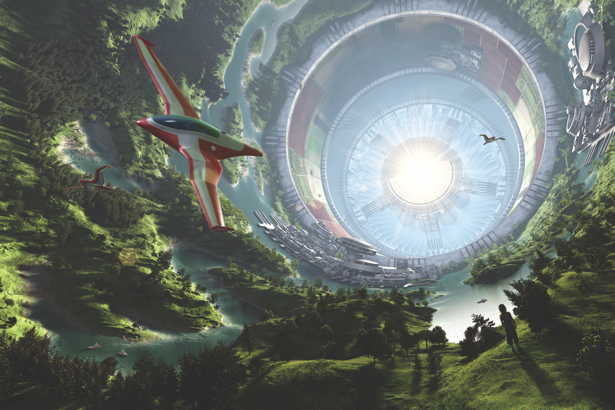
CA: Which skills are essential to work successfully and credibly in 3D, and how can designers and illustrators develop them?
AB: 3D is a unique discipline, I think, in that it incorporates skills from a lot of areas, any of which will help in some way in the creation of credible 3D imagery. I started out with traditional media, so I guess I come to it more from the 2D, painterly approach, so I think that has given me a good grounding for composition, light, colour and texture, but it also involves a sense of photography and photographic knowledge, since essentially you are creating an object or scene that you can more around or within, and camera placement, albeit virtual.
Knowledge of lighting and how things reflect or bounce light comes into play, as well as in physical rendering, actual lens aperture settings and exposures for depth of field blurring. Equally, the fact that you are pushing or pulling polygons in 3D space is very sculptural and constructive, which again is probably how people with traditional model making or sculpting skills come into using digital 3D, via the likes of ZBrush. To develop any skills, you have to get your hands dirty and try the software out: that's how I learned to use the tools that I do, and it remains exciting because I'm always still learning new things. Like any other form of design or illustration, observation is also key, in my opinion. The more you observe reality, or others work, the better your chances of putting what you see into what you do.
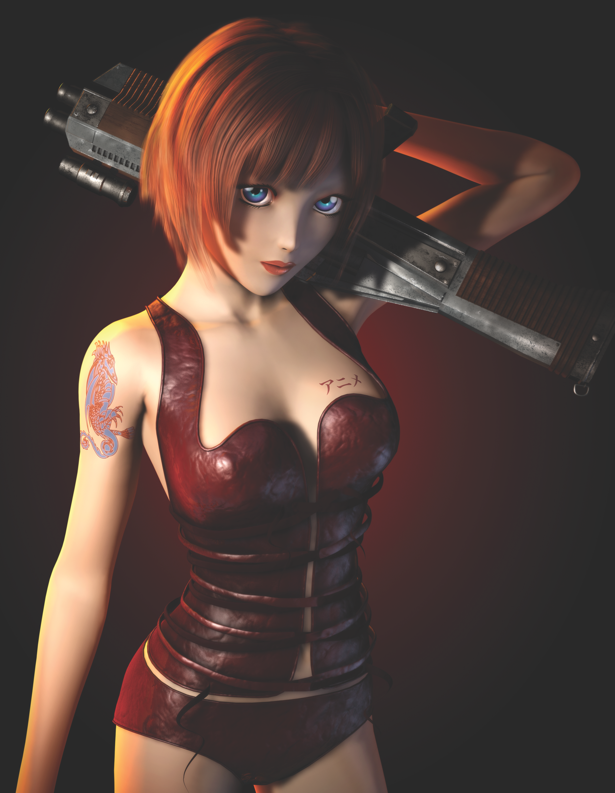
CA: What problems is a designer or illustrator likely to encounter the first time they attempt 3D and how do they overcome them?
AB: One of the main 'problems' with 3D, in many ways, is that, as a 2D illustrator, you are used to working to a single, fixed viewpoint. You are only creating what you need to see as the illusion of 3D. You learn to do a certain amount of this anyway in 3D as well of course, but you often still have to create more of the object you are modelling in some form or ANother.
So even though you don't need the viewer to see the details of the form that are not visible from their viewpoint, you may still need it to cast a proper shadow, or reflect in an adjacent object – all things that one fakes in a 2D image, but are harder in 3D. This can slow down the creative process sometimes, and makes you get bogged down in creating lots of fine details. You can of course use your Photoshop skills to paint in the correct shadows or reflections if you wish, but it depends on the realism you are trying to achieve. The complete flipside of this 'problem', though, is that once you have created that object in all its perfection, you can of course then view it from any angle, and make adjustments and tweaks to placement and perspective that would be impossible in 2D. Swings and roundabouts.
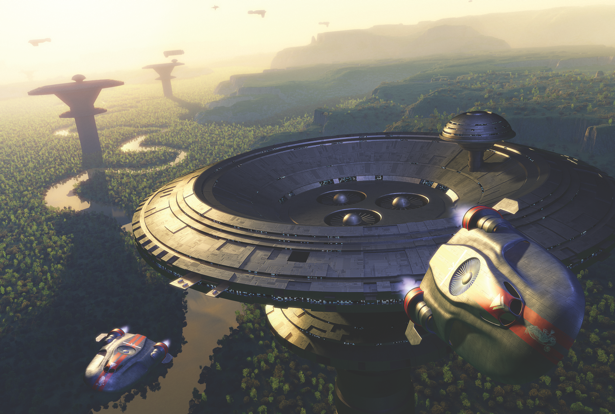
CA: Can you explain the logistics of how you go about creating 3D work, your typical workflow, programmes used?
AB: I usually dive straight into the 3D realm and start modelling, depending on the brief, although I still occasionally start with a 2D sketch either on paper or via Photoshop and my Cintiq, if it would be quicker or preferable to the client to see a colour rough sketch early on to make sure I'm thinking along the right lines. Otherwise, I start blocking out the form of my creation in 3D, often starting with basic parametric objects or primitives – sphere, cube, cylinder – or working with splines drawn in Illustrator or Photoshop.
Get the Creative Bloq Newsletter
Daily design news, reviews, how-tos and more, as picked by the editors.
These are then edited and shaped to my needs as I go along. I'll sometimes send a client a rough-form sketch, for example, if it's a vehicle or figure, but if it's something like a slick Apple product concept, there's little point showing them anything until it basically looks like the intended finished item, with materials and lighting in place, since I need them to be excited, or simply visualise what is being portrayed without any great stretch on their part. I use Cinema 4D Studio for almost all my 3D work, and, of course, use the Adobe creative suite, both before, during and in post for everything 2D. I do also dabble with ZBrush when I can. It's an awesome app, but takes a little getting used to the workflow and interface.
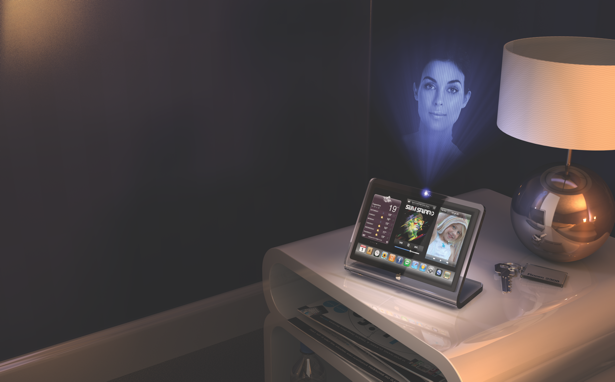
CA: Where do you get your inspiration from? Who or what influences you?
AB: Cinema, nature, books, other artists work. I’ve got a passion for light and detail, like most artists, I guess, and things I see when out and about often inspire me, visually. When I’m abroad, I’m constantly taking photographs that may or may not inspire something, or at least be reference for it at some point. I’ve always loved science fiction in all its forms, so I derive a lot of my own personal inspiration from that, whether it’s just a written idea or concept, or something I see in others work that leads me off on my own flights of fantasy.
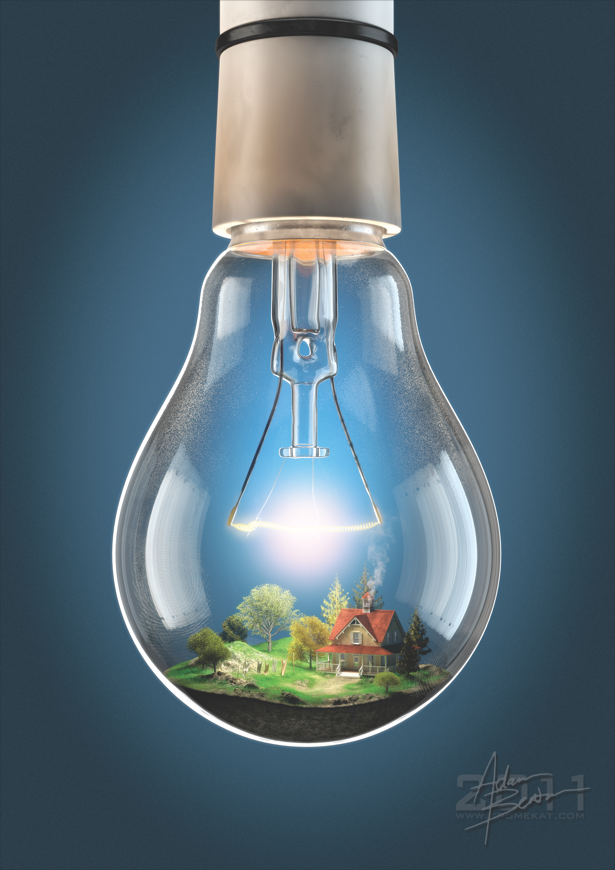

Thank you for reading 5 articles this month* Join now for unlimited access
Enjoy your first month for just £1 / $1 / €1
*Read 5 free articles per month without a subscription

Join now for unlimited access
Try first month for just £1 / $1 / €1

The Creative Bloq team is made up of a group of art and design enthusiasts, and has changed and evolved since Creative Bloq began back in 2012. The current website team consists of eight full-time members of staff: Editor Georgia Coggan, Deputy Editor Rosie Hilder, Ecommerce Editor Beren Neale, Senior News Editor Daniel Piper, Editor, Digital Art and 3D Ian Dean, Tech Reviews Editor Erlingur Einarsson, Ecommerce Writer Beth Nicholls and Staff Writer Natalie Fear, as well as a roster of freelancers from around the world. The ImagineFX magazine team also pitch in, ensuring that content from leading digital art publication ImagineFX is represented on Creative Bloq.
